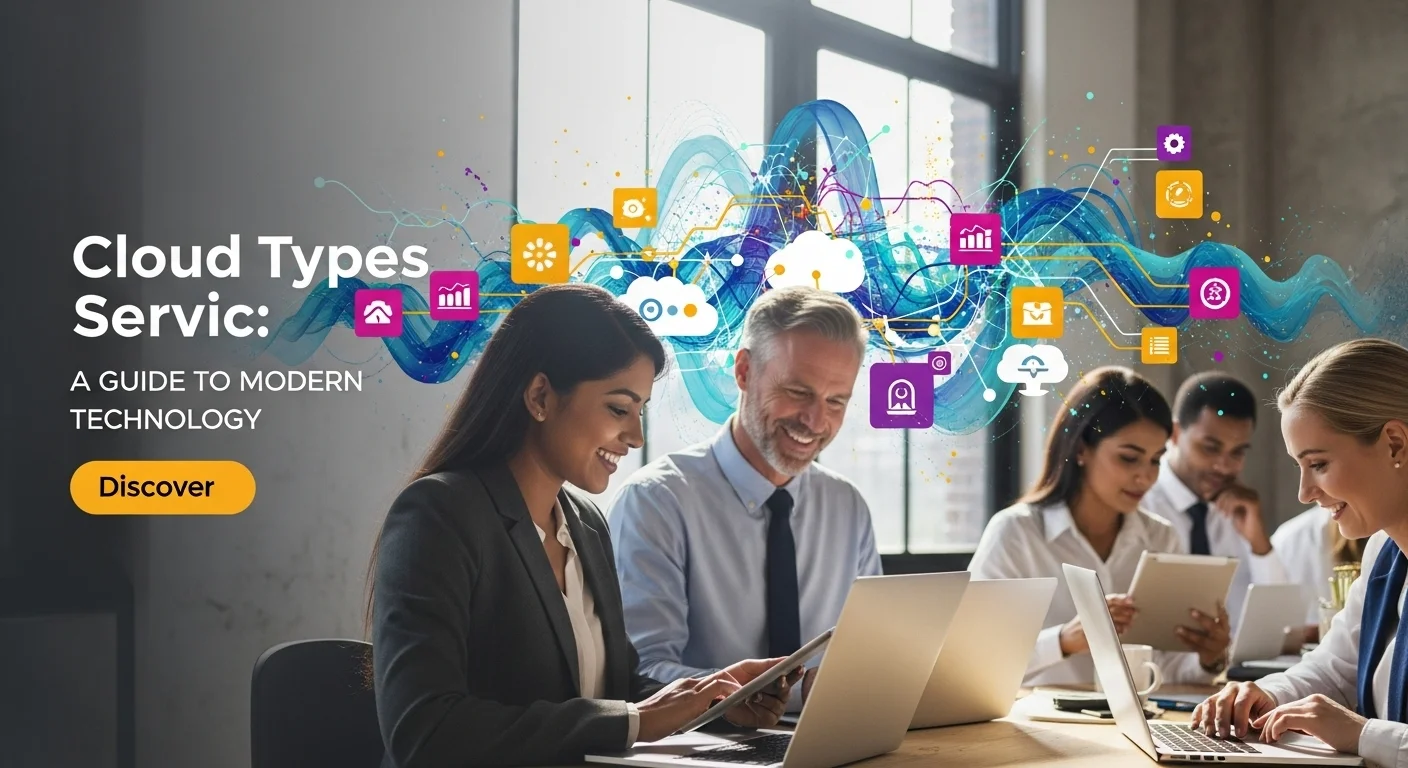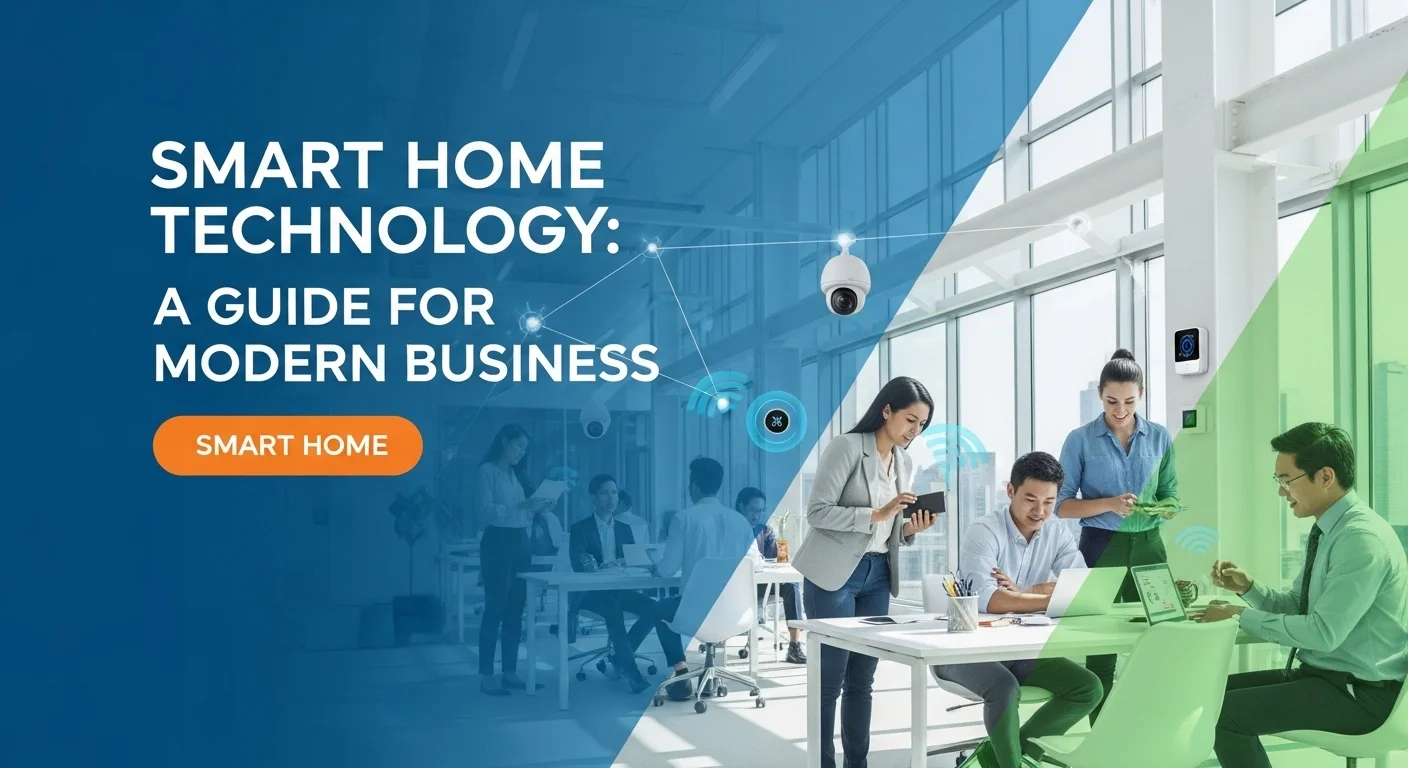A Guide to Cloud Service Models: IaaS, PaaS, and SaaS Explained Simply

Executive Summary
In my years as a cloud solutions architect, I've seen countless businesses struggle to understand the landscape of modern technology. The key is to grasp the different types of cloud services. This article is my attempt to cut through the jargon and give you a straight-forward guide. We'll walk through the main cloud models: Infrastructure as a Service (IaaS), Platform as a Service (PaaS), and Software as a Service (SaaS). We'll even touch on the newer serverless model. My goal is to explain what they are, how they differ, and what they mean for you. By the end, you'll be able to make smarter decisions about your IT infrastructure, development projects, and software choices, giving you the tools to boost scalability, save money, and get ahead of the competition.
Table of Contents
Table of Contents
- What Are Cloud Services and Why Do They Matter?
- Infrastructure as a Service (IaaS): The Foundation
- Platform as a Service (PaaS): The Developer's Playground
- Software as a Service (SaaS): Cloud Power for Everyone
- Serverless Computing: The Future of Cloud Functions
What Are Cloud Services and Why Do They Matter?
In today's digital world, 'the cloud' is everywhere, but what does that really mean? I often find that the technical terms can be intimidating. At its heart, cloud computing is a massive shift in how we use technology. Instead of buying and managing your own physical servers and hardware, you can rent resources—from applications to storage and processing power—over the internet. This isn't just a technical upgrade; it's a game-changer that allows for incredible agility, innovation, and growth. Understanding the different types of cloud services is essential for any business wanting to stay competitive. It levels the playing field, giving small startups access to the same powerful tools as huge corporations without the massive upfront cost.
Your journey into the cloud starts with understanding its main service models. These models basically define how much you manage versus how much the cloud provider handles for you. The four main categories are Infrastructure as a Service (IaaS), Platform as a Service (PaaS), Software as a Service (SaaS), and the rising star, Serverless Computing. Each of these cloud service models offers a different set of benefits for various needs. Choosing the right one can dramatically improve your team's efficiency, speed up development, and lower your costs. It’s a strategic decision that affects everything from product launches to your budget. Let's dive into each one to see what they're all about.
Infrastructure as a Service (IaaS): The Foundation of Your Cloud
Infrastructure as a Service, or IaaS, is the most fundamental of the cloud service types. Think of it as renting the raw ingredients of a data center. You get access to the building blocks: virtual servers, networking, and storage. You don't own the physical machines, but you control the operating systems and the software you install on them. The cloud provider takes care of the physical hardware—the racks, servers, and cables—while you manage everything from the OS up. I've worked with companies that had very specific needs for their legacy software, and IaaS was a lifesaver because it gave them the control they needed. It offers the most flexibility, feeling a lot like your own data center but with the huge advantages of cloud scalability and a pay-as-you-go model.
The big names you'll hear in IaaS are Amazon Web Services (AWS) with its Elastic Compute Cloud (EC2), Microsoft Azure's Virtual Machines, and Google Cloud's Compute Engine. These cloud service providers give you a massive menu of options to build your infrastructure exactly how you need it. The benefits are huge. First, you trade a large capital investment in hardware for a predictable operating expense. You can scale resources up when you're busy and back down when things are quiet, so you only pay for what you actually use. Second, it makes disaster recovery so much easier. Providers have data centers all over the world, so you can build resilient systems that stay online even if one location has an issue. For anyone needing to move existing applications to the cloud or build a highly customized system, IaaS is the powerful foundation you need.
Platform as a Service (PaaS): The Developer's Playground
Moving one level up, we get to Platform as a Service (PaaS). PaaS builds on IaaS by giving you a complete environment to develop and deploy applications. Here, the provider manages the servers, storage, networking, *and* the operating systems, middleware, and runtime. This is liberating for developers. I've seen development teams go from idea to launch in record time because PaaS lets them focus completely on writing code instead of managing infrastructure. It's essentially a ready-made workshop for building apps. This is a critical service because it’s a direct catalyst for innovation.
The main perks of PaaS are speed and efficiency. A development team can spin up a new environment in minutes, not weeks. This drastically cuts down development time. PaaS solutions like Heroku, AWS Elastic Beanstalk, and Google App Engine often include built-in tools for version control, testing, and deployment, making the entire process smoother. It’s also naturally collaborative, as team members can access the same environment from anywhere. It's a perfect match for agile development and DevOps. When you look at the types of cloud services, PaaS really stands out for anyone who wants to build custom apps without the headache of managing the underlying servers. It’s the sweet spot for many web and mobile app projects.
Software as a Service (SaaS): Cloud Power for Everyone
Software as a Service, or SaaS, is the cloud model you're most likely already using every day. With SaaS, a provider hosts an application and you access it over the internet, usually with a subscription. This is the most 'hands-off' model. The user just logs in and uses the software; the provider handles absolutely everything else—infrastructure, platform, updates, and maintenance. If you use Gmail, Salesforce, or Microsoft 365, you're using SaaS. It’s the ultimate in convenience, delivering a finished product directly to you.
The biggest benefit of SaaS is its simplicity. You don't have to install anything on your computer, and your IT team doesn't have to worry about updates or patches. The subscription model also makes budgeting easy, turning a potentially large software purchase into a manageable monthly expense. It's also incredibly scalable; you can add or remove users as your team changes. While the big cloud service providers have their own SaaS products, this space is filled with countless companies offering solutions for nearly every business need, from accounting to marketing. For most businesses, SaaS is the key to accessing powerful software that might otherwise be out of reach, making it a huge driver of productivity.
Serverless Computing: The Future of Cloud Functions
The latest evolution in cloud services is Serverless Computing. Now, the name is a bit misleading—of course, there are still servers involved! The difference is that as a developer, you don't have to think about them at all. The cloud provider handles everything related to provisioning, managing, and scaling the server infrastructure. I like to explain it with an analogy: it's like using electricity. You just flip a switch to get power; you don't manage the power plant. The most common form is Function as a Service (FaaS), where you upload small pieces of code (functions) that run in response to specific triggers, like a user uploading a photo. The provider runs the code and then shuts everything down. You only pay for the split seconds your code is actually running.
The magic of serverless is its incredible cost efficiency and automatic scaling. You are billed only for the precise compute time you use, down to the millisecond. This is a game-changer for applications with unpredictable traffic. If your function suddenly gets a flood of requests, the provider handles it seamlessly without you lifting a finger. This makes serverless perfect for building things like IoT backends, data processing tasks, and modern microservice-based applications. The leading services here are AWS Lambda, Azure Functions, and Google Cloud Functions. While it requires a different way of thinking about architecture, serverless is quickly becoming one of the most powerful and efficient ways to build in the cloud.

Your Complete Guide to Cloud Services for Business Solutions
Truly understanding the types of cloud services isn't just for the tech team; it's a core part of modern business strategy. Knowing the difference between Infrastructure as a Service (IaaS), Platform as a Service (PaaS), Software as a Service (SaaS), and Serverless allows you to match your technology choices directly to your business goals. In this section, I'll give you a deeper comparison of these models, share some business techniques I use with clients to help them choose the right fit, and look at the major providers shaping the cloud world. Think of this as your map to navigating the cloud successfully.
A Deeper Dive: Comparing the Cloud Service Models
To make the right choice, you need to understand the technical trade-offs. A concept I always come back to is the 'Shared Responsibility Model,' which the major cloud service providers like AWS and Azure use. It clearly shows what they manage versus what you're responsible for.
- IaaS (Infrastructure as a Service): The provider handles the physical data center, servers, and networking. You are responsible for almost everything else: the operating system (including patching), security, middleware, data, and your applications. It's like buying a plot of land; you have total freedom to build whatever you want, but you're also responsible for the construction and maintenance. This gives you maximum control.
- PaaS (Platform as a Service): The provider's responsibility goes further. They manage the infrastructure *and* the operating system and runtime. Your main focus is on your application and your data. It’s like leasing a fully equipped workshop; you can focus on your craft without worrying about the tools or the building's maintenance.
- SaaS (Software as a Service): Here, the provider manages nearly everything: the infrastructure, the platform, and the software itself. Your responsibility is light, mostly focused on managing who has access and how you use the tool. This is like taking a bus; you don't worry about the engine, the driver, or the route—you just get on and enjoy the service.
This comparison makes it clear: the choice between the four main cloud services is always a balance between control and convenience. IaaS gives you the most control for complex projects. PaaS speeds up development by handling the backend work. SaaS offers pure convenience with ready-to-go software. And Serverless takes convenience even further, letting you forget about servers entirely and focus just on your code.
How to Choose the Right Cloud Service for Your Business
Picking a cloud model is a strategic decision, not just a technical one. It’s about finding the best fit for your specific project, team, and goals. Here are the four questions I always ask my clients:
- What's your team's expertise? Be honest about your in-house skills. If you have a team of pros who love managing infrastructure, the control of IaaS is a great fit. If your strength is in building apps, not managing servers, PaaS will let your developers shine. If you have limited tech staff and just need a tool that works, SaaS is your best bet.
- How fast do you need to move? Your time-to-market is a huge factor. SaaS products are available instantly. PaaS dramatically speeds up development compared to building on IaaS. IaaS offers the most power, but it also takes the most time to set up. Let your business agility goals guide your choice.
- What does your application need? Think about the application itself. Is it a legacy app you're moving to the cloud? That often points to IaaS. Is it a brand-new web app built with modern methods? PaaS is probably a perfect fit. Is it for a standard business function like CRM or accounting? A SaaS solution has likely already perfected it for you. For event-driven tasks, a serverless approach could be the most efficient.
- What's your budget and pricing model? Each service has a different cost structure. IaaS is based on resource consumption. PaaS often bundles those costs with a platform fee. SaaS is typically a predictable per-user subscription. Serverless is based on executions and runtime. I always advise clients to model their expected usage to see which will be most cost-effective. A steady, predictable workload might be cheaper on IaaS with a long-term plan, while a spiky, unpredictable one is often much cheaper on a serverless model.
A Closer Look at the Major Cloud Service Providers
The cloud market is led by a few giants. Knowing who they are and what they do best is key.
- Amazon Web Services (AWS): The original pioneer and market leader. I find that AWS has the most extensive and mature set of services. Its IaaS (EC2) and Serverless (Lambda) offerings are industry standards. Its biggest strength is its sheer variety of services and massive global community.
- Microsoft Azure: The second-largest provider, with deep roots in the enterprise world. In my experience, companies already heavily invested in Microsoft products find Azure to be a very natural fit. It excels in hybrid cloud scenarios, connecting on-premise data centers with the public cloud.
- Google Cloud Platform (GCP): GCP's strengths lie where Google itself shines: data, machine learning, and containers. Its Kubernetes service (GKE) is considered by many, including myself, to be best-in-class. I often recommend GCP to clients with data-heavy or modern container-based applications.
Beyond these three, you have other players like Oracle Cloud, IBM Cloud, and Alibaba Cloud, each with its own strengths. Today, many companies I work with are adopting a multi-cloud strategy, picking and choosing the best services from different providers. This avoids vendor lock-in and lets them use the best tool for every job. It just shows how important it is to understand not just the cloud service models, but the providers behind them.

Tips and Strategies to Master Your Cloud Experience
Getting the most out of the cloud is about more than just picking a service. To truly capture the benefits of agility and efficiency, you need a smart approach to management, security, and optimization. Here, I'm sharing some practical tips and advanced strategies to improve your cloud journey. From locking down security to controlling costs and planning for the future, these insights will help you avoid common mistakes. No matter which of the cloud service models you're using, these strategies will help you maximize the return on your investment.
Best Practices for Cloud Security and Governance
In the cloud, security is a partnership, and you must be an active partner. Strong security practices are absolutely essential, regardless of the service model you choose.
- Lock Your Digital Doors with Identity Management (IAM): IAM is your first line of defense. Always follow the principle of least privilege—only give users and services the exact permissions they need to do their job, and nothing more. Enforce multi-factor authentication (MFA) everywhere, especially for admins. I tell my clients to audit permissions regularly. All major cloud service providers have powerful IAM tools to make this happen.
- Encrypt Your Data, Always: Your data should be encrypted when it's moving across the network (in transit) and when it's being stored (at rest). Use encryption features offered by your cloud provider for storage, databases, and more. It's often as simple as checking a box, so there's no excuse not to.
- Build Virtual Fortresses with Network Security: In IaaS and PaaS, you need to configure your networks correctly. Use virtual private clouds (VPCs) to create isolated environments for your resources. Think of security groups and network access control lists (ACLs) as your virtual firewalls, controlling exactly what traffic can get in and out.
- Be a Watchful Guardian with Continuous Monitoring: You can't protect what you can't see. Set up comprehensive logging and monitoring for all your cloud activities. Use cloud-native tools to track API calls and changes to your environment. I also recommend using automated threat detection services that act like a security guard, constantly watching for suspicious activity.
- Set the Rules with Clear Governance Policies: Governance is about creating rules to control costs, manage risks, and stay compliant. You can use policy-as-code tools to enforce your rules automatically, like blocking resources from being created in unapproved regions or ensuring all storage is encrypted by default.
Controlling Costs with Cloud Financial Operations (FinOps)
One of the biggest surprises for newcomers to the cloud is how quickly costs can add up. The practice of FinOps is all about bringing financial discipline to the flexible spending model of the cloud.
- Tag Everything for Visibility: The first rule of cost management is knowing where your money is going. Implement a strict tagging strategy for every resource. By tagging resources by project, team, or environment, you can get a clear, detailed breakdown of your spending.
- Set Budgets and Alerts: Don't wait for a shocking bill at the end of the month. Use your provider's billing tools to set budgets for different projects and create alerts that notify you when spending is about to go over. This lets you react in real-time.
- Right-Size Your Resources: I've seen so much money wasted on oversized resources. Regularly check the usage of your virtual machines and databases. If a server is only using 10% of its power, shrink it down to a smaller, cheaper size. Your provider's tools can often help you spot these opportunities.
- Commit and Save with Reserved Plans: If you have workloads that run predictably, you can save a fortune—often up to 70%—by committing to a one- or three-year plan with Reserved Instances or Savings Plans. This is one of the most effective cost-saving strategies out there.
- Turn Off the Lights: Your development and test environments don't need to run 24/7. I always advise setting up simple automation to shut them down on nights and weekends. This alone can cut their costs by more than half.
Advanced Strategies: Multi-Cloud, Hybrid, and Future-Proofing
As you become more comfortable with the cloud, you can explore more advanced strategies to optimize your operations and reduce risk.
- Multi-Cloud Strategy: This means using services from more than one cloud provider. The idea is to use the best service for each specific job. For example, you might use Google Cloud for its incredible data analytics while running your main apps on AWS. It takes more work to manage, but it offers maximum flexibility.
- Hybrid Cloud Strategy: A hybrid cloud blends your on-premise infrastructure with a public cloud. I've seen this work well for companies with data they can't move to the public cloud for regulatory reasons or for those who need computing power right next to their physical operations. Tools like AWS Outposts and Azure Arc are designed to make this much easier to manage.
- Avoiding Vendor Lock-in: A big fear for many is getting stuck with one provider. To avoid this, I suggest using open-source technologies like Docker and Kubernetes whenever possible. Since Kubernetes is supported by all major clouds, your applications become much more portable. Using infrastructure-as-code tools like Terraform, which works with multiple providers, is another smart move. For those interested in flexible software design, I always recommend the Martin Fowler blog; it's a treasure trove of knowledge.
By using these tips, you can go from simply *using* the cloud to truly *mastering* it. This proactive approach ensures your technology is a powerful engine for business success, driving innovation and giving you a lasting competitive edge.
Expert Reviews & Testimonials
Sarah Johnson, Business Owner ⭐⭐⭐
The information about the cloud service types is good, but I think they could add more practical examples for business owners like myself.
Mike Chen, IT Consultant ⭐⭐⭐⭐
This is a useful article about cloud services. It helped me get a better handle on the topic, though some concepts could be simplified even further.
Emma Davis, Tech Expert ⭐⭐⭐⭐⭐
Excellent article! Very comprehensive guide to cloud service models. It helped me a lot for my specialization and I understood everything perfectly.



